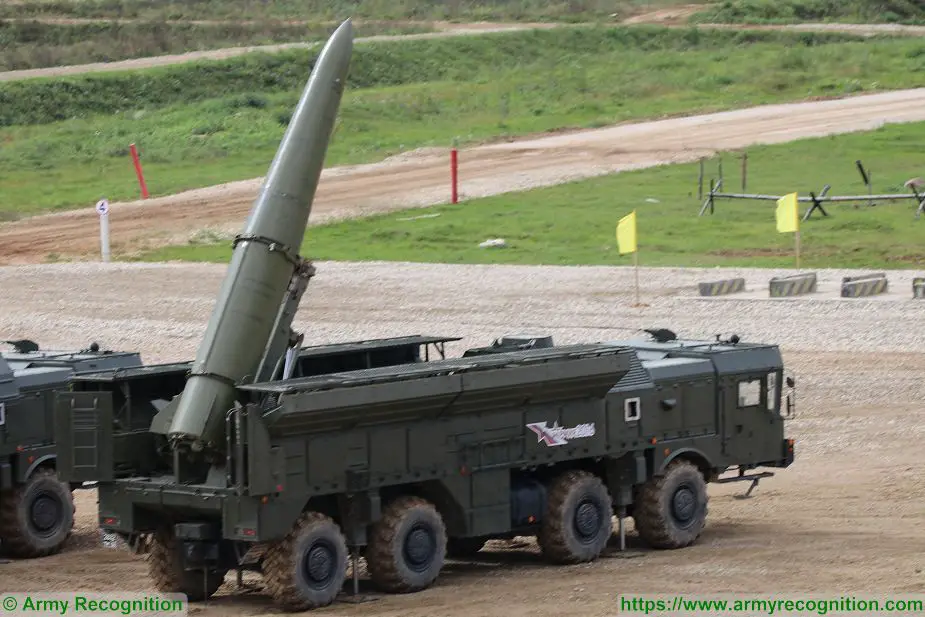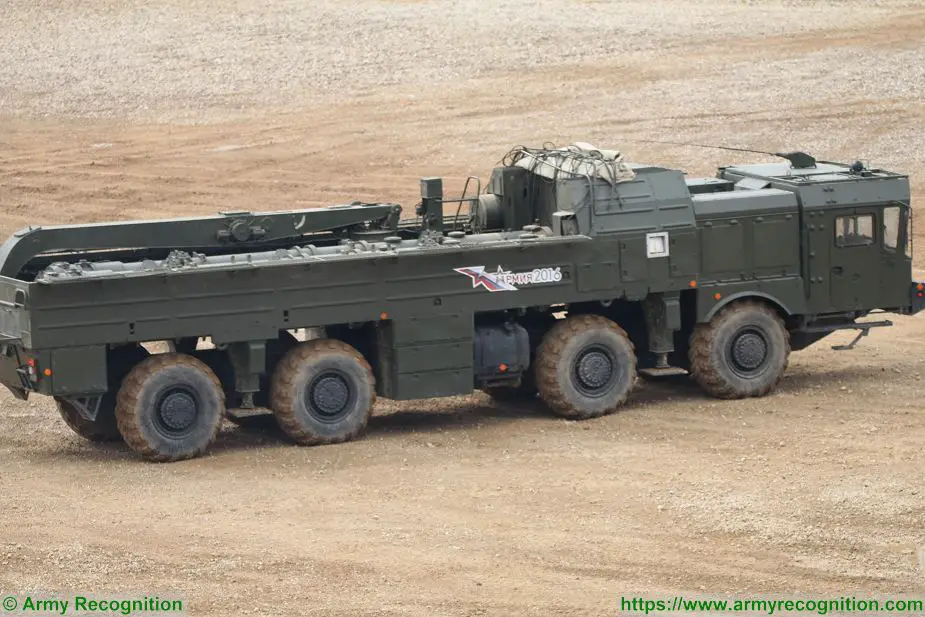Analysis: Iskander missile key weapon in the Russian defense concept
Western experts believe the Iskander-M operational-tactical missiles together with S-400 air defense weapons and coastal Bastion antiship complexes play a key role in Russian defense concept dubbed in the West as A2/D2. It says the adversary cannot enter their range without the risk of being destroyed, the Zvezda broadcaster said.

Iskander-M road mobile short-range ballistic missile at Army-2016, International Military Technical Forum near Moscow, Russia. (Picture source Army Recognition)
Iskander is designed to destroy adversary air and missile defenses, as well as important facilities defended by them. Deputy CEO of Vysokotochnye kompleksy (Precision complexes) and Designer General of the Machine-building Design Bureau Valery Kashin said the Iskanders destroy targets with surgical accuracy. Western countries so far do not have arms to counter Russian missiles.
Iskander is distinguished by high speed. It can develop a speed of Mach 6. Deputy head of the technical guideline to design Iskander-M Valery Drobinogi said in contrast to the predecessors the missile is guided on all trajectory stages. Another know-how is minimal echoing area which together with counter-missile maneuver capabilities allow it to escape adversary air defense. The aeroballistic missile reaches the necessary altitude and steers during descent to avoid becoming a target for the adversary. The missile can sustain 35g-overload.
A unit of vehicles and servicemen is necessary to fire Iskander. The complex comprises a self-propelled launcher, a transloader, a maintenance vehicle, a command vehicle, an information post and a life-support vehicle. Missile brigade Commander Colonel Anatoly Gorodetsky said if all formation hardware were on the march the column would be several kilometers long. Engagement depends on the target. A massive missile strike is delivered at air defense targets to guarantee their destruction.

Ammunition loader truck for tIskander-M TEL Transporter Erector Launcher mobile unit at Army-2016, International Military Technical Forum near Moscow, Russia. (Picture source Army Recognition)
The transloader carries various munitions as Iskander-M fires aeroballistic and cruise missiles. No other weapon in the world can fire various-class missiles from one launcher. The Russian weapons do not need any special storage conditions or heat and humidity regime. Iskander missiles can be stored at temperatures from minus 50 to plus 50 degrees without heating or cooling. Kashin said various types of missiles make the adversary guess which of them would be fired. Such a variation gives the commander more capabilities to fulfil the mission.
The information post of the complex provides aiming data to the cruise missile. Lecturer of the new missile retraining courses Major Viktor Sazonov said it calculates flight assignments. Besides the launch point and target coordinates, the operator enters adversary air and missile defense algorithm. There can be several sections and the missile has to know how to bypass them. The operator and data preparation chief of the Iskander crew are in charge of the flight route.
It is to be noted that Russia could have remained without the weapons as domestic designers created the Oka system before Iskander. The warhead had next to nothing echoing area which made it invisible for adversary missile defense. But the Americans convinced the Soviet leadership to drop Oka and the INF Treaty was a formal reason for it.
After Oka the Tochka and Tochka-U missiles remained the only cover for Russian army offensive directions. It was necessary to create ground forces missiles which would comply with Russian-US agreements. Iskander appeared as a result.
United into a missile formation Iskander provides major firepower and the adversary cannot foresee its actions. Kashin said Iskander and its infrastructure would serve at least 30 years and the design of upgraded missiles would continue, the Zvezda said.


























